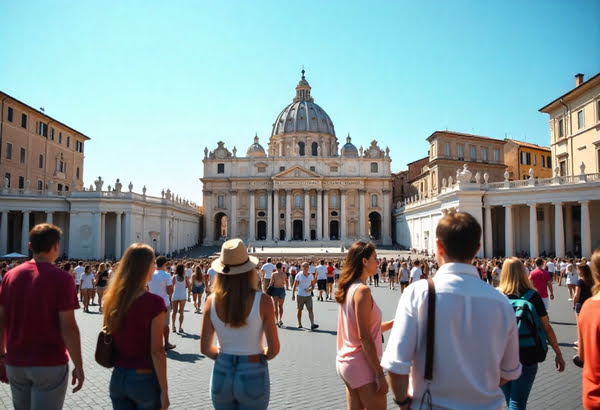Published on
August 10, 2025 |

In 2024, international tourism experienced an extraordinary rebound, with an estimated 1.4 billion travelers exploring destinations worldwide—reaching record levels not seen since before the pandemic. This surge in global travel has brought renewed excitement for many popular spots but has also intensified overcrowding in several small and highly sought-after locations. Among the most impacted are Vatican City, Andorra, San Marino, the Bahamas, and Saint Kitts and Nevis. These destinations face extreme visitor pressure due to their limited size, small resident populations, and unique cultural or natural appeal, making them hotspots where tourists dramatically outnumber locals. The rapid increase in arrivals combined with these factors has pushed these places to the forefront of overcrowding concerns in 2024.
A recent study conducted by a prominent safari company sheds light on exactly which countries and tourist hotspots are experiencing the highest visitor pressure relative to their local populations. By collecting data from national tourism authorities and matching it against resident numbers, the analysis was able to determine where tourism is most intense and potentially overwhelming local communities.
At the top of this list sits Vatican City, which emerges as the most overcrowded destination worldwide. The ratio of tourists to residents is staggering—an average of 7,709 visitors for every local inhabitant. This is largely due to Vatican City’s unique nature: the world’s smallest independent state, covering just 0.44 square kilometers, and home to fewer than 900 people, mainly clergy and Vatican officials. It holds tremendous religious and cultural significance, drawing millions of pilgrims and sightseers from across the globe each year.
For travelers who want to enjoy Vatican City without the crush of crowds, visiting during Italy’s shoulder seasons is a smart strategy. These quieter months—typically between March and April or October and November—see fewer tourists overall, providing a more peaceful experience not only at the Vatican itself but throughout Italy.
Booking guided tours is another effective way to enhance your visit. Tours led by knowledgeable experts allow visitors to delve into the history, art, and architecture, helping them fully appreciate the site’s richness even when it’s busy. Many tour companies also offer skip-the-line options, which can save hours waiting in queues.
For those seeking the ultimate hassle-free experience, luxury travel services offer tailored itineraries. These specialists help plan the perfect timing, secure tickets well in advance, and manage all the logistical details—ensuring visitors can enjoy the Vatican without any stress.
However, Vatican City isn’t the only destination facing the challenge of overtourism. Andorra, a small mountainous country nestled between Spain and France, ranks second on the list. It welcomed approximately 9.6 million visitors in 2024, compared to a local population of just over 80,000, highlighting the intense tourist influx relative to its size.
Rounding out the top five most overcrowded spots are San Marino, the Bahamas, and Saint Kitts and Nevis—each a popular draw despite their small resident populations. These destinations remain highly appealing for travelers, offering unique cultural experiences and natural beauty.
To make the most of these popular yet crowded places, planning trips during shoulder seasons is advisable. Traveling outside peak times not only helps avoid overwhelming crowds but also often means better prices and a more authentic connection with the destination and its people.
In 2024, a record 1.4 billion travelers fueled intense overcrowding in small but popular destinations like Vatican City, Andorra, San Marino, the Bahamas, and Saint Kitts and Nevis, where visitor numbers far exceed local populations.
In summary, as international tourism bounces back robustly, some destinations are feeling the strain of mass visitation. Being aware of overcrowding patterns and timing travel thoughtfully can help visitors enjoy these remarkable places without contributing to the pressures faced by local communities. Whether it’s wandering through the spiritual heart of Vatican City or exploring the scenic enclaves of Andorra and the Caribbean, traveling smarter can lead to richer, more rewarding experiences.






